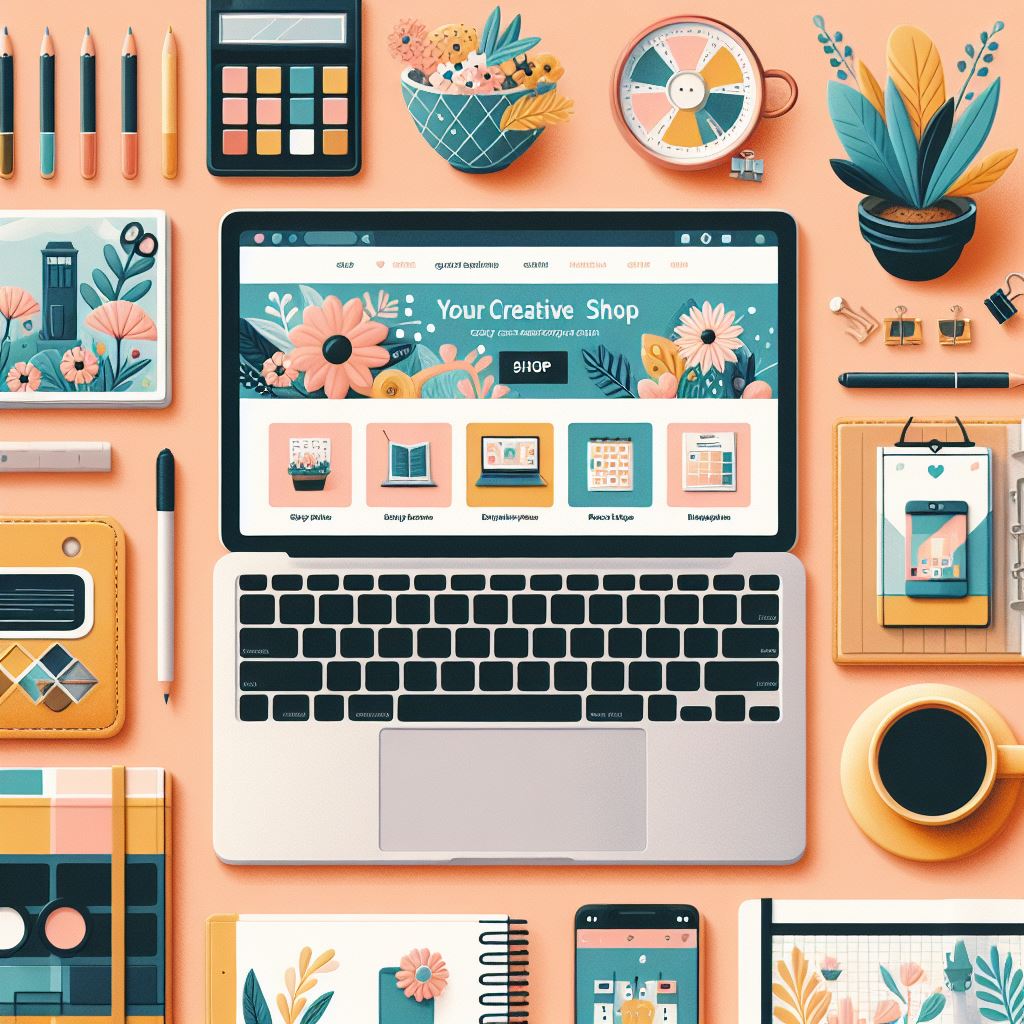Picture this: You’re an artist, lost in the flow of creation, brushstrokes dancing across the canvas, fingers flying over the keyboard, or beads clicking rhythmically as a new piece takes shape. But the joy of making is often overshadowed by the constant pressure to sell, market, and ship, leaving you feeling more like a factory worker than a free-spirited artist. What if there was a way to generate income from your art even while you’re enjoying a much-needed creative break, sipping coffee in a sunny cafe, or exploring a new inspiring landscape?
This is the dream of passive income – a revenue stream that, once established, requires minimal ongoing effort to maintain. And for artists, Etsy, with its thriving marketplace for handmade and digital goods, holds the key to unlocking this income-generating potential. But before we dive into the exciting world of Etsy passive income, let’s address a common misconception:
Table of Contents:
- Debunking the “Passive Income” Myth
- Understanding Digital Products and Printables
- Finding Your Profitable Niche
- Creating High-Quality Digital Products
- Optimizing Your Etsy Listings for Success
- Driving Traffic to Your Shop
- Pricing Your Printables for Profit
- Automating and Streamlining Your Workflow
- Building a Long-Term Passive Income Stream
- FAQs
Debunking the “Passive Income” Myth
The term “passive income” can be a bit misleading, conjuring images of effortless earnings flowing in while you lounge on a beach. The reality, however, is that any income stream, digital or physical, requires work. Etsy is not a magical money-making machine; it’s a platform that rewards dedication, strategy, and a willingness to put in the effort, especially in the beginning.
Think of it like planting a garden. You wouldn’t expect to simply scatter seeds and watch a bounty of vegetables magically appear. You need to till the soil, nurture the seedlings, and tend to your garden with care. Similarly, building a passive income stream on Etsy involves:
- Upfront Investment: Creating captivating designs, setting up your shop, researching keywords, and crafting compelling listings require time and effort. You’re laying the groundwork for future success.
- Ongoing Nurturing: Even after your shop is live, you’ll need to water your “income garden” with consistent attention. This involves managing customer inquiries, updating product listings, promoting your shop, and adapting to Etsy’s ever-evolving algorithms.

Success on Etsy, like gardening, is a journey, not a destination. It requires a long-term mindset, a commitment to learning and growing, and a passion for sharing your artistic gifts with the world.
Understanding Digital Products and Printables
Now that we’ve cleared the air about the work involved, let’s explore the exciting world of digital products – a category of goods perfectly suited for passive income on Etsy.
Digital products encompass any downloadable file that customers can access electronically. This includes a wide range of creative offerings, such as:
- Ebooks: Share your knowledge and expertise on a specific topic, providing valuable information in a digital format.
- Online Courses: Take your educational content a step further with interactive courses, combining videos, workbooks, and community support.
- Templates: Offer pre-designed layouts for resumes, business cards, social media graphics, or even website designs.
- Stock Photos: Sell high-quality images for commercial or personal use, catering to bloggers, designers, or small businesses.
- Digital Artwork: Expand your reach beyond physical prints by offering digital files that customers can print at home or use digitally.
Printables fall under the umbrella of digital products, but they are specifically designed for customers to print. Think of them as the DIY version of traditional art prints or stationery. Popular printable categories include:
- Planners and Organizers: Help customers stay on track with beautifully designed daily, weekly, or monthly planners, as well as specialized trackers for fitness, finances, or even meal planning.
- Art Prints and Wall Decor: Offer a range of styles, from minimalist quotes to intricate illustrations, allowing customers to personalize their homes with affordable and easily accessible art.
- Invitations and Cards: Cater to life’s special moments with customizable invitations for weddings, birthdays, baby showers, or even holiday gatherings.
- Worksheets and Educational Resources: Provide valuable learning tools for teachers, parents, or students, covering topics from language arts to math to creative skills.
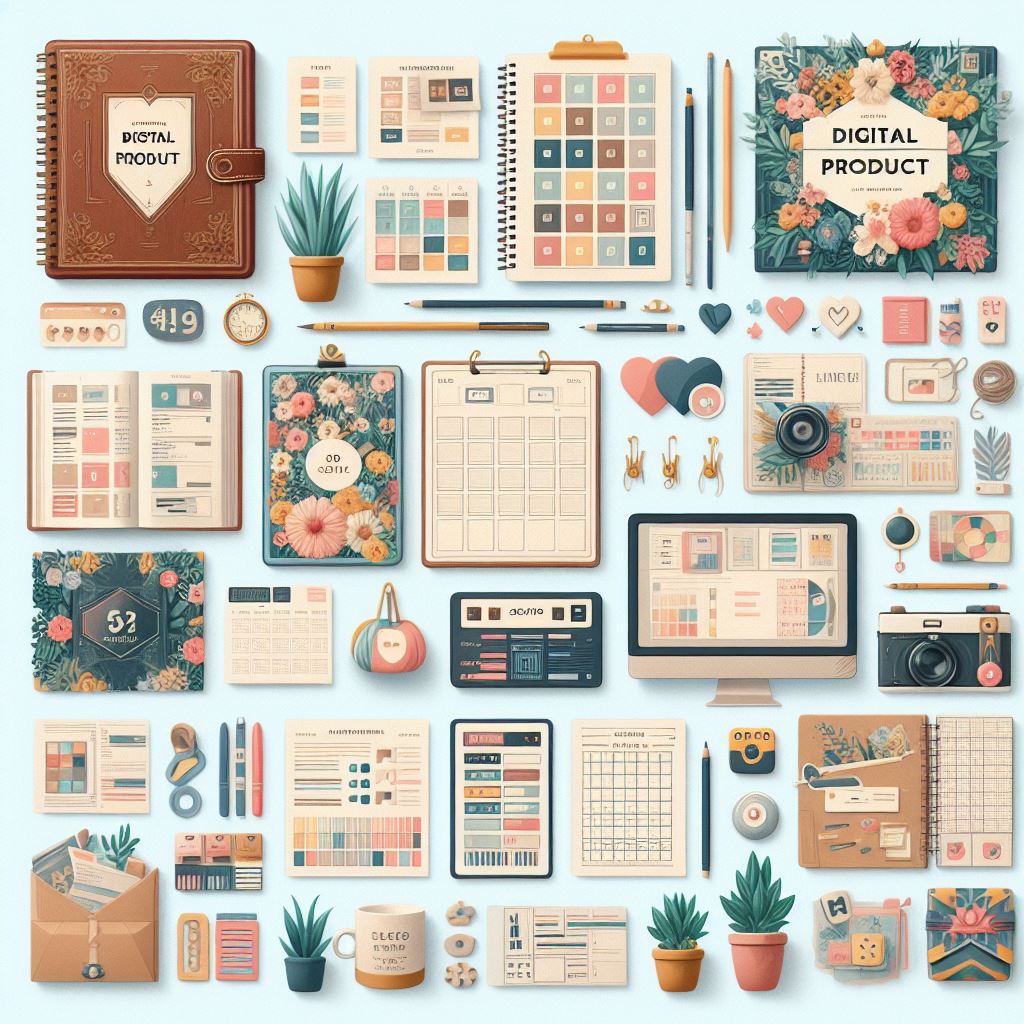
Why Sell Digital Products on Etsy?
Etsy is a natural fit for digital products, offering several advantages:
- Effortless Delivery: Once you upload your digital file, Etsy handles the delivery process. Customers receive a download link instantly after purchase, eliminating the hassle and expense of shipping physical goods.
- Higher Profit Margins: Without material costs or shipping fees, you retain a larger percentage of your earnings.
- Scalability: You create the design once and can sell it an unlimited number of times. Each sale generates pure profit.
- “Evergreen” Potential: Some digital products, like planners, educational resources, or timeless art prints, remain relevant for extended periods, providing a steady stream of passive income.
Finding Your Profitable Niche
Now that you understand the allure of digital products, let’s dive into the crucial first step: finding your profitable niche. This involves identifying a specific market segment where you can offer unique value while facing minimal competition.
Unlocking the Power of Long Tail Keywords
Long tail keywords are longer, more specific search phrases that pinpoint a particular customer need. Instead of competing for broad, generic terms like “planner” (which yields millions of results on Etsy), you can target niche phrases like “printable fitness planner for busy moms” or “minimalist watercolor floral wedding invitations.”
Longer tail keywords offer several advantages:
- Less Competition: Fewer listings are vying for the same search terms, making it easier to rank higher in search results.
- Higher Conversion Rates: Customers using specific search phrases already know what they’re looking for, making them more likely to purchase when they find a product that meets their needs.
- Targeted Audience: You’ll attract customers genuinely interested in your niche, leading to higher satisfaction, positive reviews, and repeat business.
Step-by-Step Niche Research
- Etsy Search Exploration: Start by broadly exploring Etsy, searching for terms related to your interests and skills. Pay attention to the top-ranking listings:
- Keywords: What specific words are they using? Are they focusing on long tail phrases?
- Pricing: What are the common price points for similar products?
- Presentation: How are they showcasing their products? What type of product photos are they using?
- Pinterest Trendspotting: Pinterest is a visual treasure trove for discovering trending ideas and uncovering keywords. Explore boards related to your niche and take note of:
- Keywords: What phrases are used in pin descriptions and titles?
- Visual Styles: What design aesthetics are popular? What colors, fonts, or layouts are trending?
- Keyword Research Tools: Utilize dedicated Etsy keyword research tools like eRank or Marmalead to gain deeper insights:
- Search Volume: Discover how many people are searching for specific keywords.
- Competition: Analyze how many listings are competing for those keywords.
- Profitability: Assess the potential earnings based on search volume, competition, and average price points.
- Tap into Your Passions and Existing Audience: What are you already knowledgeable and passionate about? Do you have an existing audience on social media or a blog? What problems or needs can you solve for them?
- If you’re a knitting enthusiast, consider creating printables for organizing knitting patterns or tracking project progress.
- If you’re a fitness blogger, design workout trackers, meal planners, or motivational art prints for your audience.
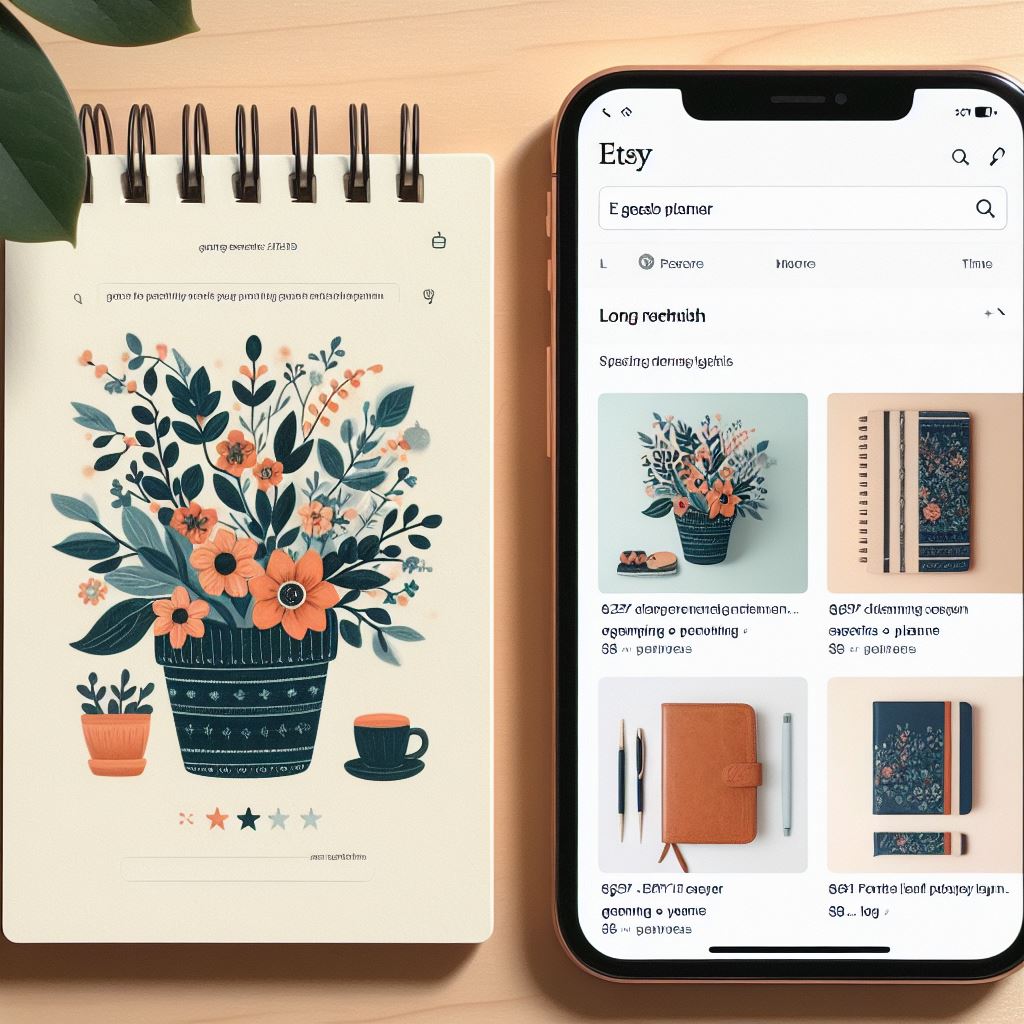
Creating High-Quality Digital Products
You’ve identified your profitable niche, and now it’s time to channel your artistic energy into crafting digital products that stand out in the crowded Etsy marketplace. While professional design skills are an asset, user-friendly tools empower anyone to create beautiful and sellable digital goods.
Choosing Your Design Arsenal
- Canva: Canva is a versatile design platform, offering both free and paid Pro plans. It’s incredibly user-friendly, with drag-and-drop functionality, a vast library of templates, fonts, and graphics, and the ability to customize designs to your heart’s content. Canva is perfect for creating a wide range of digital products, including planners, art prints, social media templates, and more. Important Note: While Canva Pro provides access to a vast collection of images, it’s crucial to check individual image licenses within Canva to ensure they are permitted for commercial use. Not all Canva Pro images are automatically licensed for this purpose.
- Corjl, Templett, and JetTemplate: These platforms specialize in editable printables, allowing your customers to personalize their purchases directly within their browsers before downloading. They offer features like text editing, font selection, color customization, and even the ability to add or remove design elements.
- Corjl: My personal favorite (and the platform I use for my own shop, Growing Your Craft). It’s affordable, user-friendly, and offers mobile editing capabilities.
- Templett: Another popular option with similar features, though it can be slightly pricier than Corjl.
- JetTemplate: Offers a free starting plan, making it a budget-friendly option for new sellers.

The Importance of Originality
In the digital world, copyright infringement is a serious concern. Never use images, characters, or designs created by others without proper permission or licensing. Etsy takes intellectual property rights seriously, and using copyrighted material can result in shop suspension or even legal action.
Focus on creating original artwork or purchase commercial licenses for any elements you incorporate from other sources. This ensures your products are unique, legally sound, and reflect your authentic artistic voice.
Tips for Designing Irresistible Printables
- Diverse Formats: Experiment with various printable formats to cater to different needs and preferences:
- Planners: Daily, weekly, monthly, goal-setting, project planning.
- Checklists: Packing lists, cleaning routines, to-do lists, grocery lists.
- Trackers: Habit trackers, mood trackers, fitness logs, expense trackers.
- Wall Art: Quotes, illustrations, abstract designs, photography.
- Labels: Product labels, gift tags, address labels, jar labels.
- Digital Stickers: Add a touch of personality to digital planners or notes.
- Visually Appealing: Presentation matters! Use high-resolution graphics, clear and legible fonts, and thoughtfully chosen color palettes to create a professional and cohesive look.
- Customization is Key: Offer customization options whenever possible to enhance the perceived value and appeal to a wider range of customers. Allow them to:
- Edit text fields.
- Choose from various font styles.
- Select color palettes.
- Add or remove design elements.

Optimizing Your Etsy Listings for Success
You’ve poured your heart and soul into creating digital treasures, but now you need to ensure they get discovered by eager buyers. Your Etsy listings are your digital storefronts – they need to be captivating, informative, and optimized for both human shoppers and Etsy’s search algorithm.
Mastering Etsy SEO
Etsy SEO (Search Engine Optimization) is the key to visibility. It involves strategically using keywords and crafting compelling listings that rank higher in Etsy search results, ensuring your products get noticed amidst the competition.
Crafting High-Converting Listings
- Keyword Power:
- Thorough Research: Use the niche research methods discussed earlier to identify relevant long tail keywords that reflect what your target audience is actually searching for.
- Strategic Placement: Incorporate your primary keywords throughout your listing:
- Title: Use clear, concise titles that include your main keywords.
- Tags: Utilize all 13 available tags, employing multi-word phrases that accurately describe your product and capture variations in search terms.
- Description: Naturally weave your keywords into your product description, but prioritize clarity and benefit-driven language.
- Compelling Descriptions: Don’t just list features; highlight benefits and address customer needs:
- Problem-Solving: Explain how your product will solve a problem or improve the customer’s life.
- Benefits Over Features: Focus on the positive outcomes of using your product. Instead of simply stating “printable planner,” emphasize how it will help customers “organize their busy schedules, reduce stress, and achieve their goals.”
- Details Matter: Provide clear information about file formats, dimensions, and any included elements.
- User-Friendly Instructions: Explain the download process in simple steps and offer printing recommendations for optimal results.
- Visually Enticing Product Photos: Images are crucial for grabbing attention and showcasing your printables in their best light:
- Professional Quality: Use high-resolution, well-lit images. Consider hiring a professional photographer or investing in a lightbox for consistent, high-quality results.
- Mockup Magic: Utilize mockups to present your designs in real-life settings, helping customers envision how they can use your products. Artboard Studio is an excellent tool for creating professional-looking mockups.
- Multiple Angles: Showcase different aspects and variations of your product. Include close-ups of details, images demonstrating different uses, and photos highlighting available customization options.
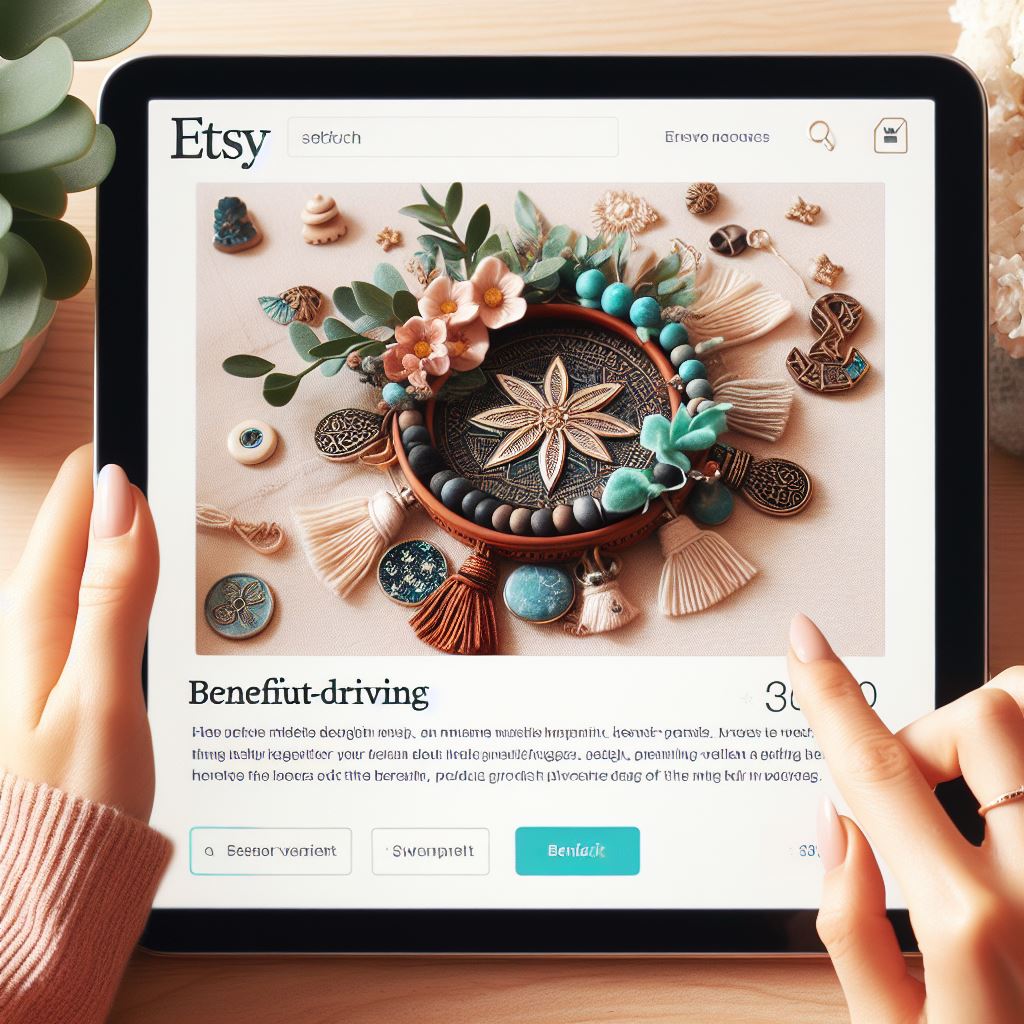
Driving Traffic to Your Shop
While Etsy SEO is the foundation of your shop’s visibility, it’s not the only path to attracting customers. Especially when you’re starting out, it’s important to diversify your marketing efforts to get your products in front of a wider audience.
Beyond Etsy Search:
- Harnessing the Power of Social Media:
- Pinterest: Pinterest is a visual search engine, making it perfect for showcasing visually appealing printables.
- Create eye-catching pins with keyword-rich descriptions that link directly to your Etsy listings.
- Join group boards related to your niche to expand your reach.
- Run Pinterest ads to target specific demographics and interests.
- Instagram: Use Instagram to connect with potential customers and build a community around your brand:
- Share captivating photos and videos of your products in lifestyle settings.
- Offer behind-the-scenes glimpses into your creative process, sharing your inspiration and design journey.
- Use relevant hashtags to increase discoverability.
- Engage with followers through stories, Q&As, and contests.
- Utilize Instagram’s shopping features to allow seamless purchasing directly from your feed.
- Facebook Groups: Facebook groups provide a way to connect with niche communities and build relationships with potential customers:
- Join groups relevant to your target audience (e.g., groups for busy moms, wedding planning, or crafting enthusiasts).
- Participate authentically in conversations, offer valuable advice, and build trust before promoting your products.
- Share your Etsy listings occasionally, focusing on how your products can solve specific problems or meet the group’s needs.
- Pinterest: Pinterest is a visual search engine, making it perfect for showcasing visually appealing printables.
- Etsy Ads: Boost your visibility within Etsy by running targeted ads:
- Choose relevant keywords that align with your niche and product offerings.
- Set a daily budget that aligns with your advertising goals.
- Monitor your campaign performance and adjust your keywords and bidding strategy as needed.
- Influencer Collaborations: Partner with influencers whose audience aligns with your target market:
- Offer free products in exchange for honest reviews and social media promotion.
- Explore commission-based partnerships, where influencers earn a percentage of sales generated through their unique referral links.
- Choose influencers who genuinely align with your brand values and aesthetic.
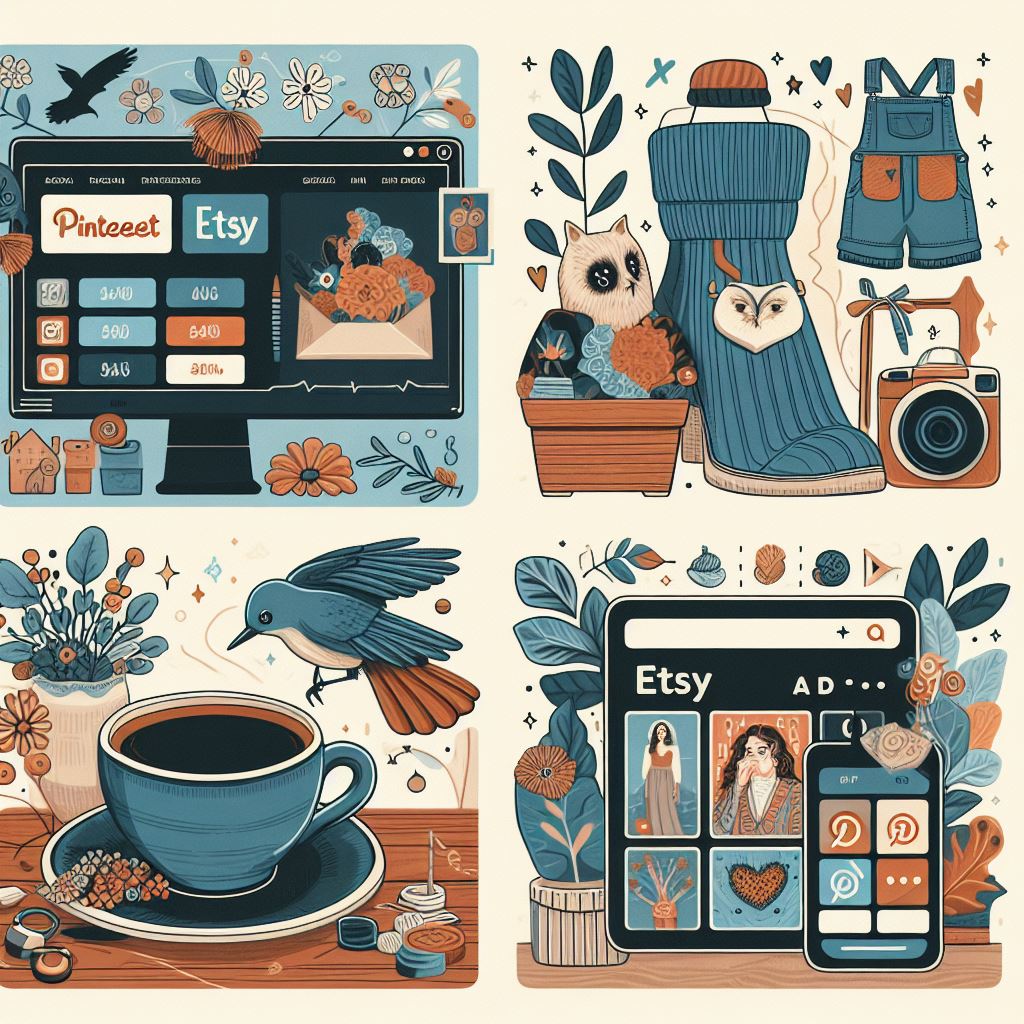
Pricing Your Printables for Profit
Pricing digital products can feel tricky, especially when the perceived value is often tied to the customer’s ability to print the design themselves. It’s important to find a sweet spot that reflects your time and skill, covers your costs, and aligns with market expectations.
Factors to Consider:
- Complexity and Uniqueness: Intricate designs, custom illustrations, or templates requiring specialized knowledge warrant higher prices than simpler, more readily available designs.
- Competitor Pricing: Research the price points of similar products within your niche. While you don’t want to undervalue your work, it’s often wise to slightly undercut competitors when you’re starting out to gain initial traction.
- Perceived Value: How unique, beneficial, and desirable are your products?
- Highlight the benefits and problem-solving aspects of your designs in your product descriptions.
- Invest in professional product photos and mockups to elevate the perceived value.
- Build a strong brand identity that resonates with your target audience.
Strategies for Maximizing Profitability:
- Bundles and Packages: Offer multiple related products at a discounted price, enticing customers to purchase more. For example, you could bundle a weekly planner with a matching to-do list and habit tracker.
- Variations: Create different versions of the same design to cater to varying needs and budgets. Offer color variations, size options, or simplified versions alongside more intricate designs.
- Tiered Licensing: For commercial use products (like logos, patterns, or illustrations), offer different license types with varying usage rights and price points:
- Personal Use: Allows for individual use, typically the lowest price point.
- Commercial Use: Permits use for small businesses, often with limitations on the number of products or sales.
- Extended Commercial Use: Grants broader usage rights for larger businesses or higher production volumes, typically the highest price point.

Automating and Streamlining Your Workflow
The beauty of passive income lies in its ability to generate revenue with minimal ongoing effort. To truly embrace this potential, you need to optimize your workflow and embrace automation whenever possible. The less time you spend on repetitive tasks, the more time you have to focus on the creative and strategic aspects of your business.
Your Etsy Automation Toolkit:
- Instant Delivery: Platforms like Corjl are game-changers for digital product sellers. They automate file delivery, providing customers with a personalized download link immediately upon purchase. This eliminates the need for you to manually send files, freeing you from the constant email inbox monitoring.
- Email Templates: Craft pre-written responses for common customer inquiries:
- Download Instructions: Explain how to access purchased files.
- Printing Recommendations: Offer tips for achieving the best print results.
- Troubleshooting: Address common issues customers might encounter.
- FAQs: Answer frequently asked questions about your products or shop policies.
- Batch Production: Streamline your design process by creating multiple designs within a cohesive theme or style at once.
- Plan your design elements and color palettes in advance.
- Create templates that you can easily adapt for different products or variations.
- Utilize batch processing features in your design software to export multiple files simultaneously.
Beyond Automation:
- Order Management System: As your shop grows, consider using an order management system to track orders, manage inventory (for any physical products you might offer), and automate shipping notifications.
- Customer Relationship Management (CRM): A CRM tool can help you organize customer data, track interactions, and automate follow-up emails, enhancing customer satisfaction and loyalty.
Building a Long-Term Passive Income Stream
While the initial setup and product creation require focused effort, building a sustainable passive income stream on Etsy is an ongoing journey. Success lies in continuous improvement, staying adaptable to market shifts, and nurturing your “income garden” with consistent care.
Strategies for Sustainable Growth:
- Data-Driven Insights: Regularly review your Etsy shop analytics to identify:
- Best-Selling Products: Which designs are resonating with customers? Focus on creating more products within those successful categories.Popular Keywords: Which search terms are driving traffic to your listings? Optimize your listings for those keywords and expand your research to uncover related terms.Customer Trends: Are there any patterns in customer demographics, purchasing behavior, or product reviews? Use this information to tailor your offerings and marketing strategies.
- Stay Informed: Etsy’s algorithms and policies are constantly evolving. Remain adaptable by:
- Following Etsy’s official announcements and blog posts.
- Engaging with the Etsy seller community through forums and social media groups.
- Reading seller blogs and industry news to stay informed about trends and best practices.
- Attending webinars and workshops offered by Etsy or other industry experts.
- Product Refresh and Expansion: Keep your shop feeling fresh and exciting with regular product updates:
- Introduce new designs and variations within your established niches.
- Create seasonal offerings to capitalize on holidays or current trends.
- Continuously add new listings to expand your reach and attract a wider customer base.
FAQs
Is selling printables on Etsy really passive?
The truth lies somewhere in between “effortless” and “constant hustle.” While printables require upfront work and ongoing maintenance (like any business), they are significantly more passive than selling physical goods. Etsy handles file delivery, and automation tools like Corjl streamline many tasks, allowing you to generate income with reduced daily involvement.
What if someone steals my designs?
Protecting your intellectual property is crucial in the digital age. Take these steps:
- Watermark Previews: Add a subtle watermark to your product preview images to deter copying.
- Register Your Designs: Register your original artwork with the Copyright Office for legal protection.
- Familiarize Yourself with Etsy’s Policies: Understand Etsy’s rules regarding intellectual property and reporting infringement.
- Report Infringement Promptly: If you discover someone using your designs without permission, report the violation to Etsy immediately.
Can I use Canva images commercially?
Canva offers a vast library of images and design elements, but their licensing varies.
- Free Images: Many free images on Canva are restricted for commercial use. Carefully check the licensing information for each image before using it in products you intend to sell.
- Canva Pro: The Pro version offers a wider selection of commercial-use assets, but it’s still essential to review individual image licenses within Canva to confirm usage rights.
- Modification is Key: To avoid any licensing issues, always modify and integrate Canva elements into your own original designs. Don’t simply sell Canva templates or images as-is.
How much can I realistically earn selling printables on Etsy?
Earnings are influenced by a multitude of factors, including:
- Niche: Some niches are more profitable than others. Thorough research is crucial for identifying markets with high demand and limited competition.
- Product Quality: High-quality designs, professional presentation, and unique offerings command higher prices and attract more customers.
- Marketing Efforts: Effective SEO, social media promotion, and targeted advertising can significantly impact visibility and sales.
- Pricing Strategy: Choosing the right pricing strategy (considering value, competition, and licensing) is crucial for maximizing profits.
New Etsy printable shops can expect to earn a few dollars per day initially. With consistent effort, high-quality products, and effective marketing, it’s realistic to scale to several hundred dollars per month within the first year and potentially reach $1,000 or more per month as your shop gains momentum.
What file formats are best for printables?
PDF is the most widely compatible and preferred format for printables. It ensures consistent formatting across different devices and printers.
Can I offer refunds for digital downloads?
It’s generally considered good practice to offer refunds for digital downloads if customers are dissatisfied with their purchase. This builds trust and enhances your shop’s reputation.
How do I prevent people from sharing my digital downloads without paying?
While it’s impossible to entirely prevent file sharing, you can add watermarks to preview images and include disclaimers in your product descriptions clearly stating that the files are for personal use only and not for resale or distribution.
What are some good resources for learning more?
- Blogs:
- Courses:
- Tools:
- Communities:
- Etsy Forums
- Facebook groups for Etsy sellers (search for groups related to your niche)
Ready to Turn Your Etsy Shop into a Passive Income Machine?
You now have the knowledge, tools, and inspiration to embark on your Etsy passive income journey. Embrace your creativity, research your niche diligently, and don’t be afraid to experiment and learn as you grow. With dedication and a dash of entrepreneurial spirit, you can transform your artistic passion into a thriving source of passive income, freeing you to create, explore, and live life on your own terms.

